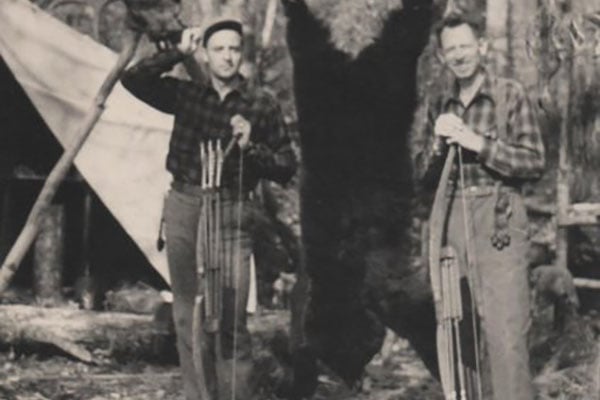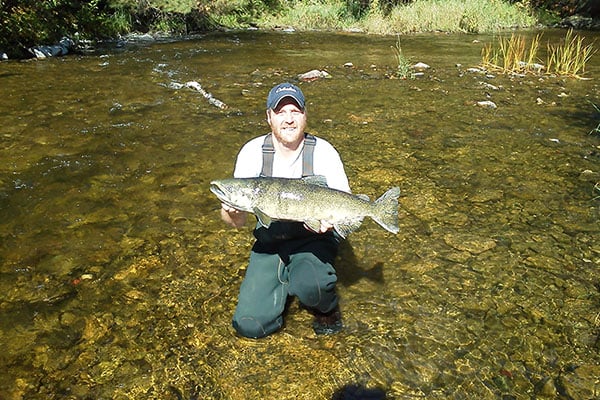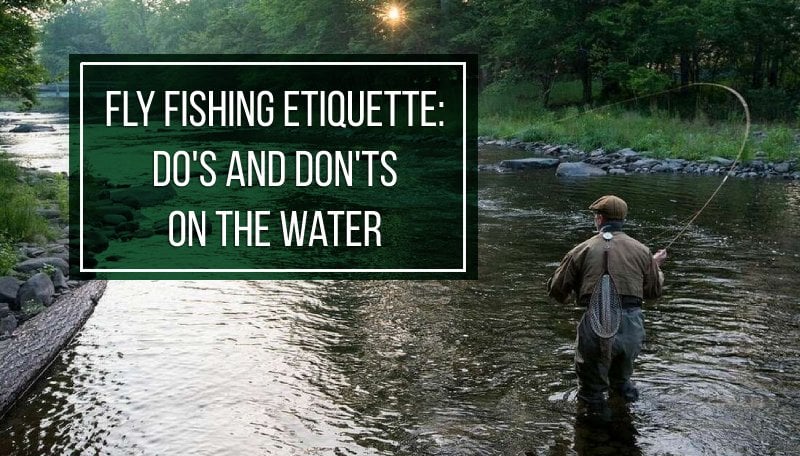Last Updated on
By David Link
Even those who aren’t intimately familiar with bow hunting culture have probably heard the name Fred Bear. He was one of the first stewards of bow hunting culture, and he is just as well known for his adventures around the world and exploits on film. He remains a cultural icon in many ways, and his spirit has been celebrated by musicians like Ted Nugent as well as enshrined in a museum at the Bass Pro Shops headquarters in Springfield, Missouri. The company he founded, Bear Archery, is still alive and well today, and hunters around the world still head out in search of trophy game with bows and other equipment that bears his name. Before you shop Bear Archery, let’s learn more about the man behind the archery brand.
Early Years
Fred Bear was born in Pennsylvania, but at a young age the booming auto industry of Michigan drew him away from his hometown of Waynesboro and to the factories of Detroit. Fred was looking to make his mark on the world, and it first came in the form of advertising, mainly silk-screening and related tasks, for automotive companies. The company that was to become Bear Archery started here under the name of Bear Products Company. Fred and his partner Charles Piper founded the company in 1933, and by 1938 business was good enough to hire Nels Grumley to expand the business.
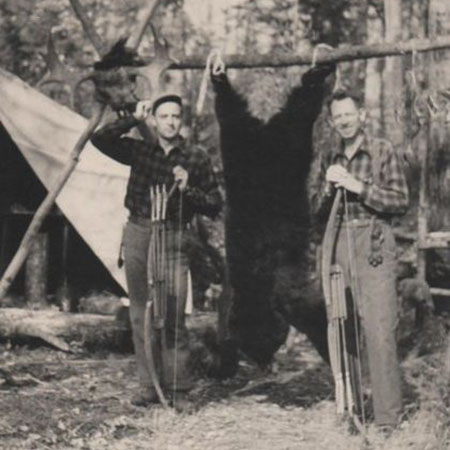
Fred Bear didn’t bring Grumley in for his skills in advertising; instead he hired Grumley to expand the company in an entirely different direction. A few years back, Fred had been captivated by the sport of archery in his late 20s, and documentaries by hunters like Arthur Young contributed greatly to Fred Bear’s new obsession (see example video below). Arthur Young had produced the first bow hunting film ever called Alaskan Adventures in 1923, and as a result had become a driving force in the growing sport of bow hunting afterward.
Spurred by the adventures of Young on the big screen, Fred began to hone his woodworking skills when he wasn’t working on his advertising business, and soon it was apparent that Fred had found his true passion. It was also during this time that Bear and Piper realized they could make an impact in the growing bow hunting market. The Bear Products Company began making bows in 1938 with the help of Grumley who was a bowyer, or craftsman skilled in the art of making bows, and by 1940 Bear and Piper had sold off the automotive advertising business to focus solely on archery.
Bear Archery
Bear and Piper renamed their company Bear Archery in 1940, and during this time Fred continued to master his skills as a bowyer with Grumley and even the famous bow hunter who had inspired him, Arthur Young. A few years later in 1947, the company relocated to a new processing plant in Grayling, Michigan. By now production lines were replacing the old practice of hand crafting bows, and Bear Archery was keeping up with the times. They produced both recurve and long bow models during this time. In 1950, Fred had reduced the construction of a composite bow to an exact science, and he filed for a patent on the Composite Archery Bow. In his patent, he outlined all the necessary steps required to create a bow with consistent accuracy when shooting successive arrows. In 1954 his patent was accepted and the Bear Archery name was further solidified in the world of bow hunting. The Composite Archery Bow was the first of many archery patents to come including the integral bowsight, archery shooting glove, and the interchangeable bow grip.
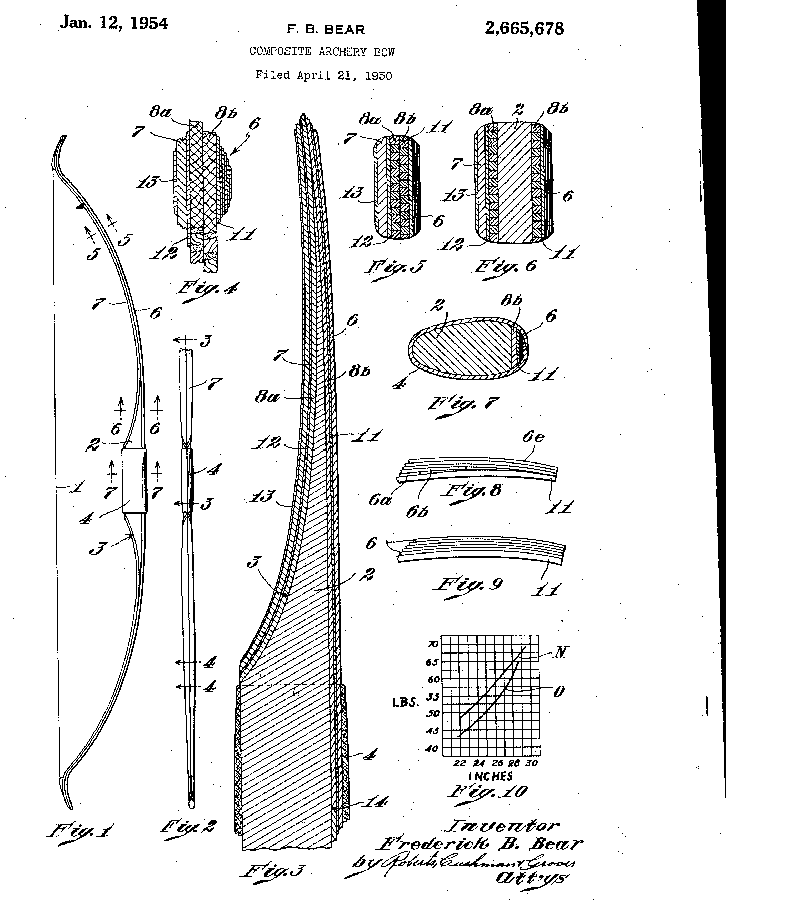
Fred sold Bear Archery in 1968, but he remained president of the company and continued to design and advance bow hunting technology until his death. Not surprisingly, Bear Archery remained true to their traditional roots, and the company did not immediately embrace the compound bow design when it was invented in 1966. Yet eventually Bear Archery began to make compound bows as well, and soon produced many successful models like the Whitetail Hunter Compound Bow. Today Bear Archery is known for both their traditional bows and compound bows. The company has since relocated to Gainsville, Florida and now has offices in Evansville, Indiana.
Fred Bear The Personality
Fred Bear’s first filmed exploit was filmed in 1942 when he headed up to the Upper Peninsula of Michigan with Detroit reporter Jack Van Coevering. This was the first of many bow hunts filmed by the two, and throughout the next 30 or so years Fred Bear continued to film and produce his bow hunting adventures. He famously traveled to Alaska, Africa and elsewhere on various hunts and expeditions, and these videos transformed Fred Bear into a media personality.
Above all else, Fred Bear had a distinct image that hunters still identify with as the look of a true outdoorsman. He wore flannel and traditional hunting garb, and he was always seen with his signature Borsalino fedora hat. His films exude the feeling of adventure in that classic early-technicolor way, and above all else he was a true steward of the outdoors. His bow hunting expeditions brought him to beautiful places around the globe, but his focus was never solely on the hunt or the kill. Fred knew the outdoors were a place to be enjoyed and celebrated no matter what brought you there, and that may be one of his most powerful and lasting messages.
Lasting Legacy
You can still hunt and target shoot with the bow designs that Fred Bear helped pioneer. Although the compound bow dominates the archery market today, there is still a healthy following of bow hunters who prefer the challenge of a traditional bow, and outside of crafting your own, Bear Archery is one of the best places to purchase a traditional bow. Whether you choose compound or traditional bows, the impact of Fred Bear on bow hunting is legendary.
Information and image regarding Composite Archery Bow patent US2665678 A courtesy of USPTO. Additional works consulted include Beararchery.com and The Archery Hall Of Fame.
Fred Bear and Jim Henderson image courtesy of Wikimedia Commons.
